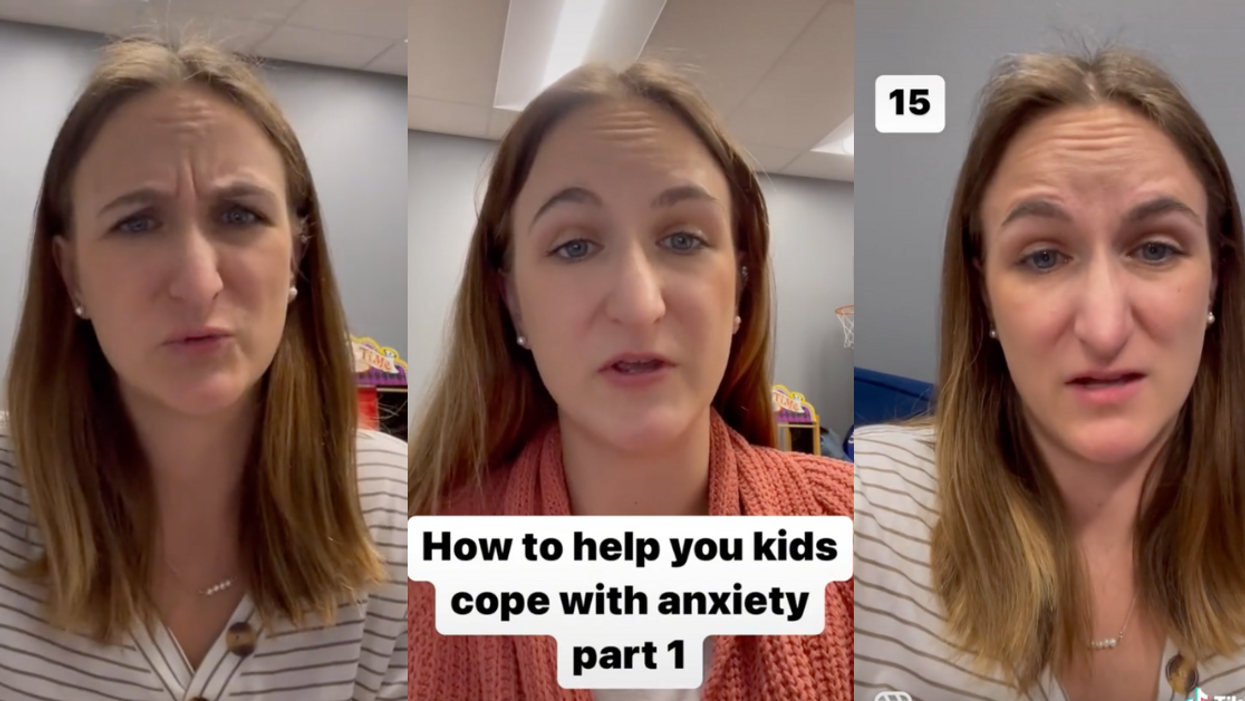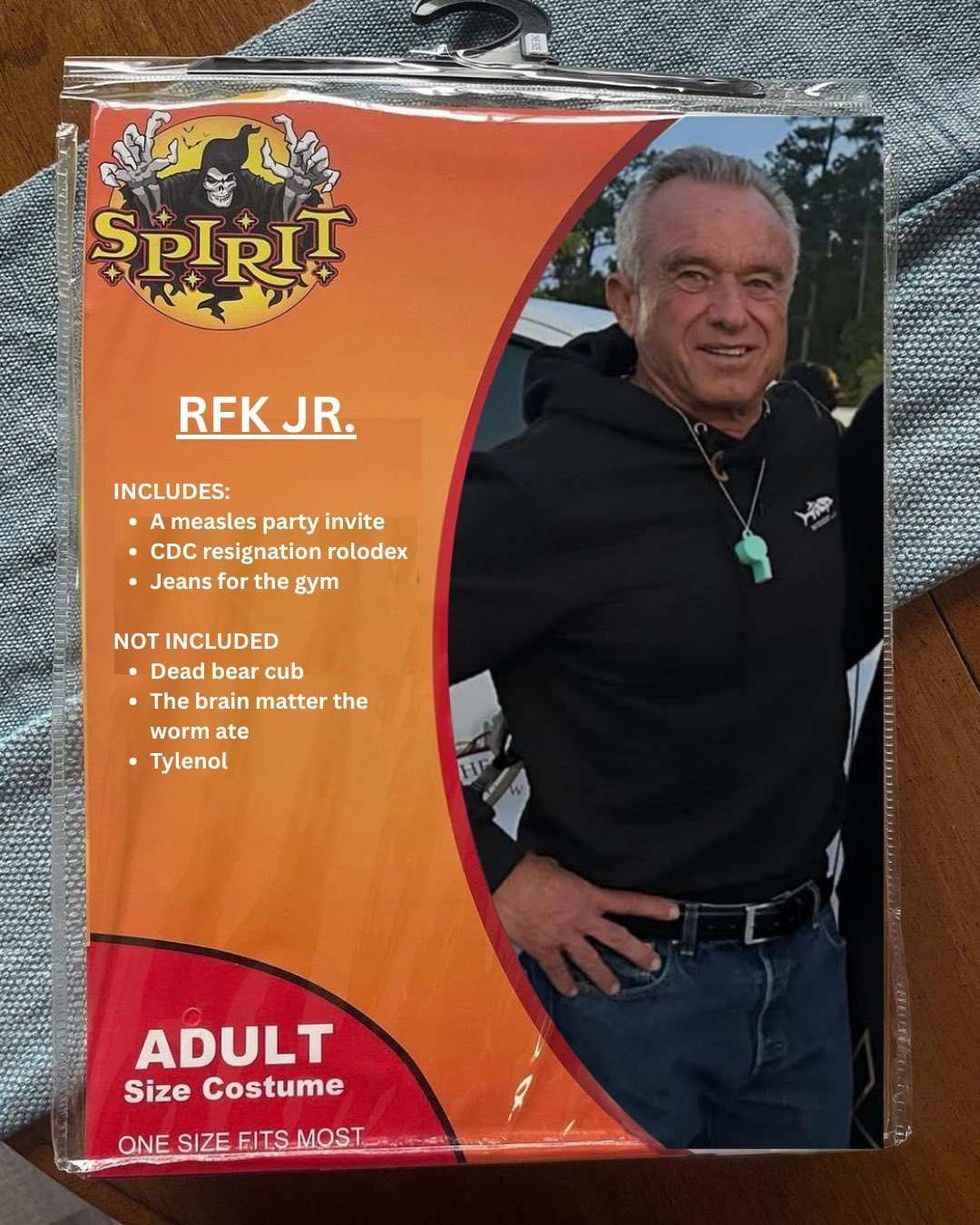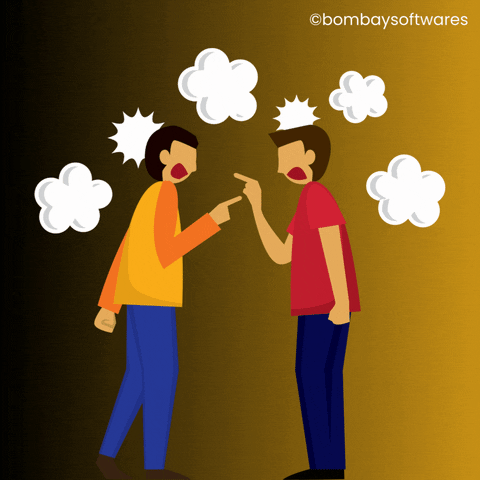Child therapist and mom Melissa Griffing has gone viral after posting a video on TikTok that sheds light on various ways children express that they're experiencing anxiety.
In her video, Griffing (@momtherapist) pointed out 15 different signs that children could be displaying signs of anxiety.
She began:
"Did you know kids talk about anxiety in a whole heck of a bunch of different ways that parents often don't pick up on?"
"Here are 15 different ways that kids say, 'I'm feeling worried.'"
Griffing then listed the 15 signs:
"My tummy hurts."
"I don't want to go to school."
"I'm not hungry."
She continued:
"I hate you."
"What if? What if? What if?"
"I need to pee again."
"I can't sleep."
"I don't know."
"My legs hurt."
"I just want to stay with you."
She completed the list with:
"Nobody likes me."
"My arms hurt."
"I think I'm getting sick."
"I don't like it."
@momtherapist Kids tall about anxiety in ways adulta often dont pick up on. Heres your cheat sheet for deciphering kid speak on anxiety! #therapy #childtherapists #thoughtsfromatherapist #wellnestcounseling #dallastherapist #parenting #4upage
Her video has been viewed more than 1.3 million times.
Viewers recognized phrases they often hear their children say as well as things they, too, said as children.











Many parents in the comments who recognized the symptoms in their children also wanted to know what they could do to help.
In response, Griffing posted four follow-up videos.
In her first one, titled, "How to help your kids cope with anxiety part 1," she offered:
"The first step in helping your kids manage their anxiety is to help them understand what they're feeling when they're feeling it."
Griffing then introduced the skill 'reflected feeling,' a practice in which the emotion is named and the problem is solved together.
You can view part 1 below.
@momtherapist Helping your kids manage their own anxiety part one. #therapy #childtherapists #tipsfromatherapist #dallastherapist #parenting #thewellcounseling
In part 2, Griffing shared two books that she uses to introduce worry and strategies to children: What to Do When You Worry Too Much and There is a Bully in my Brain.
She says that these books allow children to separate the worry from the child and explain strategies for them to use.
@momtherapist part 2 of how to help your kids#childtherapists #therapy #tipsfromatherapist #dallastherapist #parenting #wellnestcounseling
Griffing captioned part 3:
"If your kids ask for help solving problems go for it!"
"Otherwise just reflect their feeling!"
@momtherapist If you kids asks for help solving problems go for it! Otherwise just reflect thwir feeling! #childtherapists #therapy #tipsfromatherapist #dallastherapist #parenting #wellnestcounseling
In part 4 Griffing shared:
"Use a worry hat! This can be real or make believe."
"Sometimes letting go of worries is scary."
"Sometimes we feel we need them or they might be serving a purpose or meeting a need."
"Giving kids control over their worries actually can decrease their worries."
"That's why they may want to 'think it back in their heads.'"
@momtherapist Part 4 - use a worry hat! This can be real or make believe. Sometimes letting go of worries is scary. Sometimes we feel we need them or they might be serving a purpose or meeting a need. Giving kids control over their worries actually can decreases their worries. Thats why they may want to “think it back in their heads” #wellnestcounseling #childtherapists #dallastherapist #tipsfromatherapist #parenting #therapy
Griffings final piece of advice urged parents to validate their children's anxiety, as much of what worries children seems menial to adults.
However, because their children lack life experiences most adults have, their worries—in the realm of their world thus far—are "a big deal."
"So listen, empathize, reflect their feelings, and guide them through it."
She also told parents if they still have questions, they should reach out to someone, even starting with a pediatrician or primary care physician who have resources and can guide them in the right direction.








 @vanessa_p_44/TikTok
@vanessa_p_44/TikTok @vanessa_p_44/TikTok
@vanessa_p_44/TikTok @vanessa_p_44/TikTok
@vanessa_p_44/TikTok @vanessa_p_44/TikTok
@vanessa_p_44/TikTok @vanessa_p_44/TikTok
@vanessa_p_44/TikTok










 @GovPressOffice/X
@GovPressOffice/X @GovPressOffice/X
@GovPressOffice/X @GovPressOffice/X
@GovPressOffice/X @GovPressOffice/X
@GovPressOffice/X

 mass.gov
mass.gov cdss.ca.gov
cdss.ca.gov
 Sad Break Up GIF by Ordinary Frends
Sad Break Up GIF by Ordinary Frends  so what who cares tv show GIF
so what who cares tv show GIF  Iron Man Eye Roll GIF
Iron Man Eye Roll GIF  Angry Fight GIF by Bombay Softwares
Angry Fight GIF by Bombay Softwares